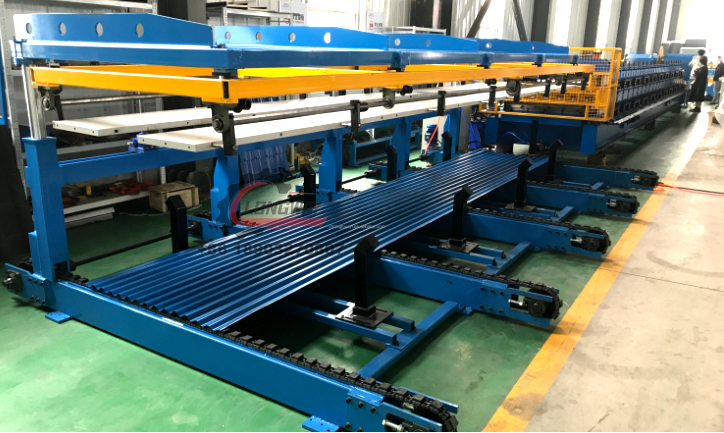Advanced Factory for Automatic Steel Sheet Slitting Line Solutions and Manufacturing
The Importance and Functionality of Automatic Steel Sheet Slitting Line Factories
In the realm of modern manufacturing, efficiency and precision are paramount. Among the various processes essential for metal fabrication, slitting—specifically, automatic steel sheet slitting—plays a crucial role in ensuring the material meets the exact specifications required for downstream applications. Automatic steel sheet slitting line factories are engineered to streamline this process, offering innovative solutions that enhance productivity while maintaining high-quality outputs.
Understanding Steel Sheet Slitting
Steel sheet slitting is a process that cuts a large, wide roll of steel (often referred to as a coil) into narrower strips of predetermined widths. These strips can then be utilized in a myriad of applications, from automotive manufacturing to the production of construction materials. The slitting process involves feeding the coil through a series of rotating blades that slice the material with precision, ensuring that each strip adheres to strict dimensional tolerances.
The Role of Automation in Slitting Lines
The introduction of automation into the steel sheet slitting process revolutionizes the way the industry operates. An automatic slitting line is equipped with advanced technologies that streamline the entire slitting operation. This includes automated coil loading, slitting, and recoiling processes, which significantly reduce manual labor requirements and the risk of human error.
Automated slitting lines are typically equipped with control systems that allow operators to set parameters such as width and tension quickly. These systems often utilize computer numerical control (CNC) technology, which ensures that every cut is executed with high precision. Additionally, these lines can adjust the slitting process in real-time, responding to any variations in material thickness or composition, thus further enhancing quality control.
Benefits of Automatic Steel Sheet Slitting Lines
automatic steel sheet slitting line factory

1. Increased Efficiency The automation of slitting processes minimizes downtime and maximizes throughput. Where manual operations might require frequent adjustments, automated systems can continuously operate with minimal intervention, resulting in higher productivity levels.
2. Precision and Consistency Automatic slitting lines deliver cuts that are highly precise, ensuring consistency across large production volumes. This is particularly important when components need to fit together seamlessly in assembly applications, such as in automotive manufacturing.
3. Improved Safety With fewer manual interventions required in the slitting process, the risk of accidents and injuries in the factory environment is significantly reduced. Automated systems can be designed with safety features that minimize hazards, protecting both workers and machinery.
4. Cost-Effective Solutions While the initial investment in automatic slitting lines may be higher compared to manual systems, the long-term savings in labor costs, increased output, and reduced waste make automatic solutions a financially sound choice for many manufacturers.
5. Flexibility Modern automatic slitting lines can be programmed to handle a wide range of steel grades and widths. This adaptability allows manufacturers to respond quickly to market demands without significant reconfiguration time.
Conclusion
In an era where competition is fierce and operational efficiencies are more critical than ever, automatic steel sheet slitting line factories represent the future of metal processing. By harnessing advanced technologies and automation, manufacturers can achieve unprecedented levels of productivity, precision, and safety.
As industries continue to evolve, adopting cutting-edge solutions like automatic steel sheet slitting lines will be essential for staying competitive. These factories not only enhance the capabilities of manufacturers but also contribute to the sustainability of operations by minimizing material waste and improving use efficiency. As a result, the importance of investing in automatic slitting technology cannot be overstated, as it is central to the advancement of the steel manufacturing sector and the broader industrial landscape. Embracing automation will ultimately pave the way for innovations that define the future of manufacturing.
-
Roof Panel Machines: Buying Guide, Types, and PricingNewsJul.04, 2025
-
Purlin Machines: Types, Features, and Pricing GuideNewsJul.04, 2025
-
Metal Embossing Machines: Types, Applications, and Buying GuideNewsJul.04, 2025
-
Gutter Machines: Features, Types, and Cost BreakdownNewsJul.04, 2025
-
Cut to Length Line: Overview, Equipment, and Buying GuideNewsJul.04, 2025
-
Auto Stacker: Features, Applications, and Cost BreakdownNewsJul.04, 2025
-
Top Drywall Profile Machine Models for SaleNewsJun.05, 2025








